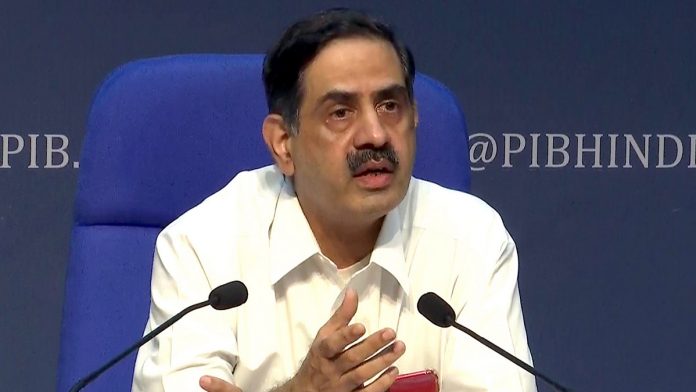Manas Dasgupta
NEW DELHI, July 20: Nearly two-thirds of all Indians above the age of six, or 67.6 per cent of the total population, have already developed Covid antibodies, the government claimed on Tuesday.
Announced the results of the fourth national serosurvey, the government said the nationwide survey has found that around two-thirds or 67.6 per cent of India’s population aged above six were previously infected with the SARS-CoV2 virus – which causes the COVID-19 disease.
This meant around 40 crore are still at risk of infection, the government added, as it warned against laxity in following Covid-appropriate behaviour and urged eligible people to get vaccinated.
“The fourth serosurvey shows there is a ray of hope, but there is no room for complacency. We must maintain Covid-appropriate behaviour,” ICMR chief Dr Balram Bhargava said.
A survey of 36,227 people, including 7,252 healthcare workers, conducted across 70 districts in 21 states in June-July indicated 67.6 per cent of Indians over the age of six had COVID-19 antibodies.
Over 50 per cent of all children between the age of six and 17 also had the antibodies. Among healthcare workers 85 per cent had the antibodies, and only a tenth were still unvaccinated.
The 67.6 per cent figure is a steep increase from the results of the third serosurvey which was conducted in December-January, shortly before the second wave began. It suggested then that only 21 per cent of those over 10 showed evidence of past exposure to COVID-19.
The second and first serosurveys, conducted last year in August-September (during the first wave of infections) and May-June, respectively, returned 7.1 and 0.7 per cent indications.
The ICMR also suggested that it would be wise to consider reopening primary schools first as children can handle virus infection better.
“Children can handle viral infection much better as they have lower number of ace receptors. So once the decision is taken and all the staff vaccinated, it would be wise to open primary schools first,” it said.
The government also added that social, religious and political congregations should be avoided and non-essential travels should be discouraged.
The results of the fourth serosurvey suggest the virus has covered around 67 per cent of India’s population in a year – despite the centre imposing one of the world’s strictest lockdowns and states following that with a slew of localised restrictions, some of which are still in place.
Medical experts and doctors have repeatedly warned of a third wave of infections and deaths, particularly since the second brought the country’s healthcare system to its knees.
However, images of people eschewing even the most basic protocols – wearing face masks and maintaining social distance in public – have drawn criticism and renewed fears. The government has repeatedly urged people to follow the rules, with Prime Minister Narendra Modi leading those making appeals to the people to follow the Covid norms strictly.
The circulation of more aggressive variants of the virus, including those that are potentially more resistant to the vaccines, have further heightened worries of a third wave.
Last month AIIMS (Delhi) chief Dr Randeep Guleria said it was “inevitable”, and that the main challenge now was vaccinating enough people to minimise the impact. Concerns, however, have been raised over the slow pace of daily vaccinations, which dipped from a record high of over 80 lakh doses on June 21 to a seven-day average of 38.62 lakh on Monday.
This morning India recorded 30,093 new cases in 24 hours – the lowest in four months and while that should be a cause for celebration, experts have flagged worrying signs, including a steady increase in the ‘R’ factor, or reproduction rate, of the virus.
The danger level is a ‘R’ value of 1.0. This morning it was 0.95 – up from 0.87 two weeks ago and 0.76 a month ago. A similarly steady increase was witnessed ahead of the second wave.
Meanwhile, the government on Tuesday informed the Rajya Sabha that no deaths due to lack of oxygen were specifically reported by states and UTs during the second Covid-19 wave.
But there was an unprecedented surge in demand for medical oxygen during the second wave and it peaked at nearly 9000 MT compared to 3095 MT in the first wave following which the Centre had to step in to facilitate equitable distribution among the states, it said.
Responding to a question on whether a large number of Covid-19 patients died on roads and hospitals due to acute shortage of oxygen in the second wave, Minister of State for Health Bharati Praveen Pawar noted that health was a state subject and states and UTs regularly report the number of cases and deaths to the Centre.

